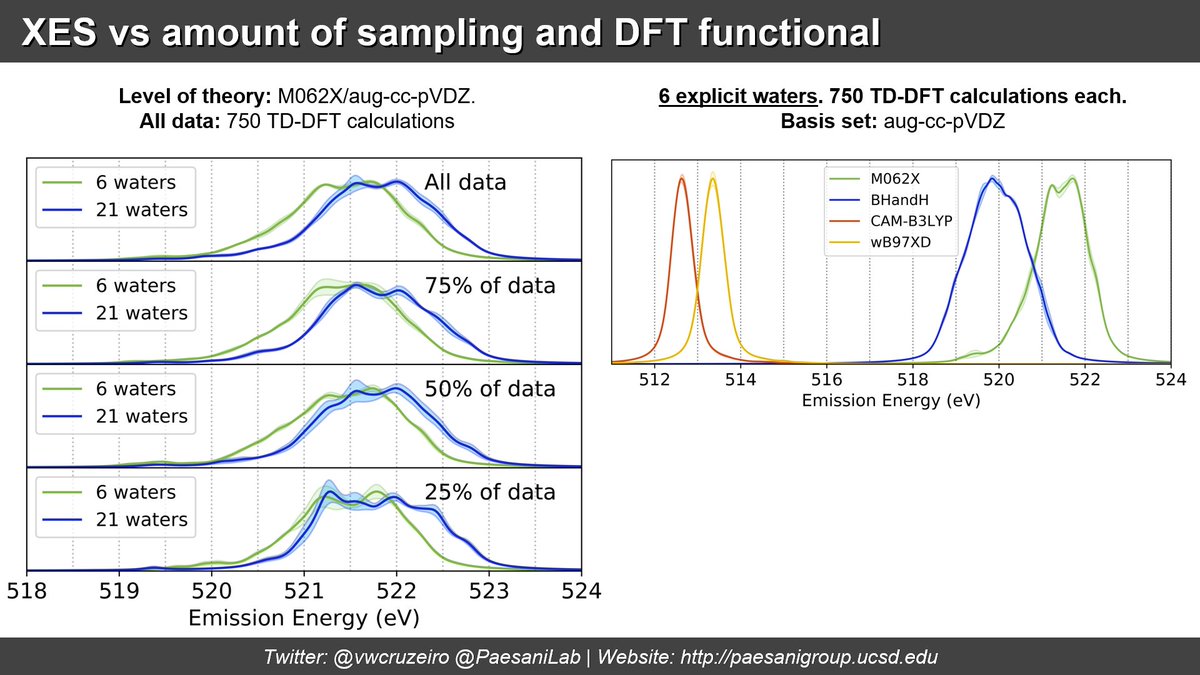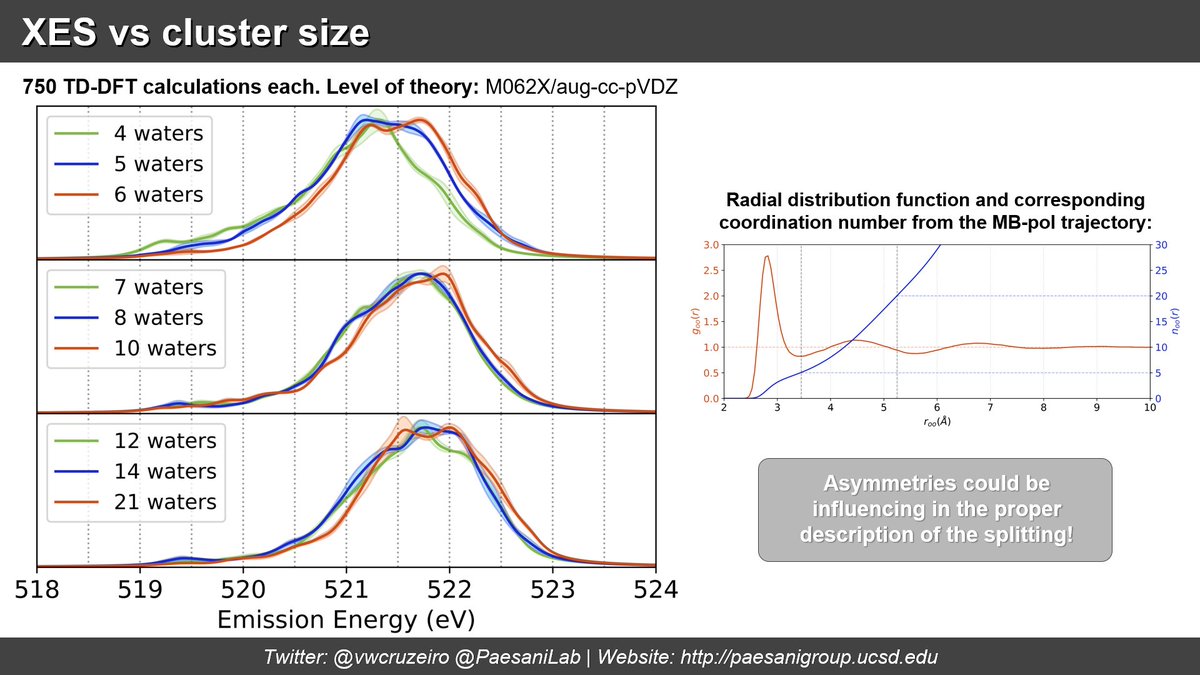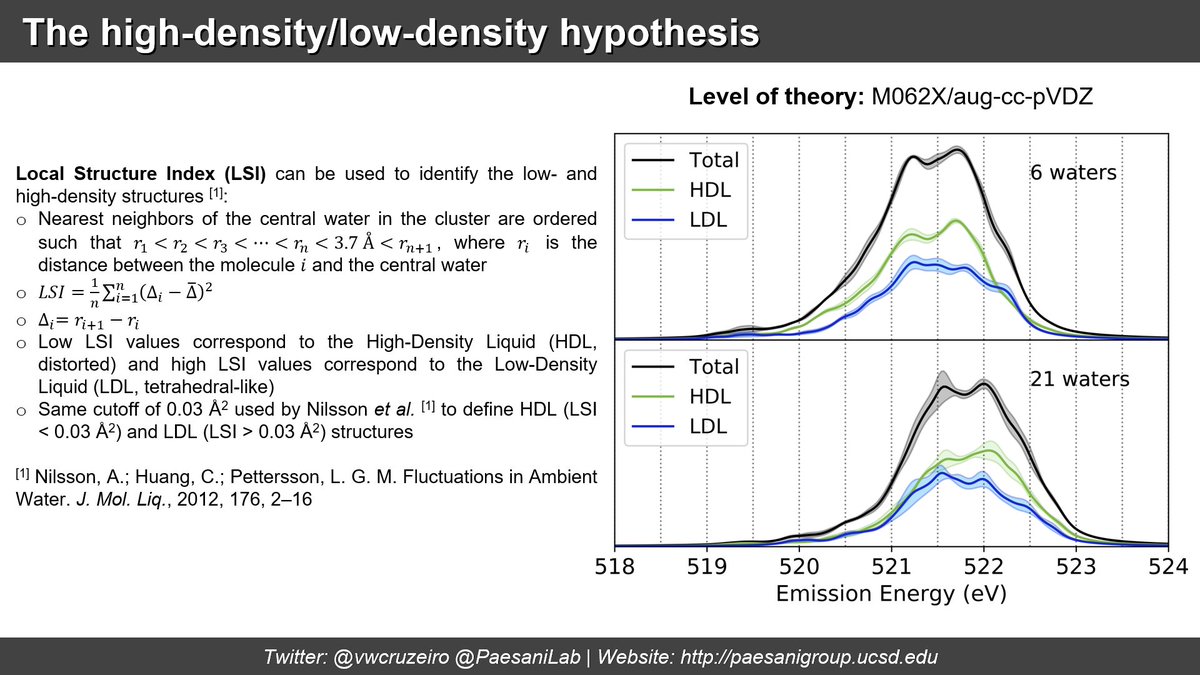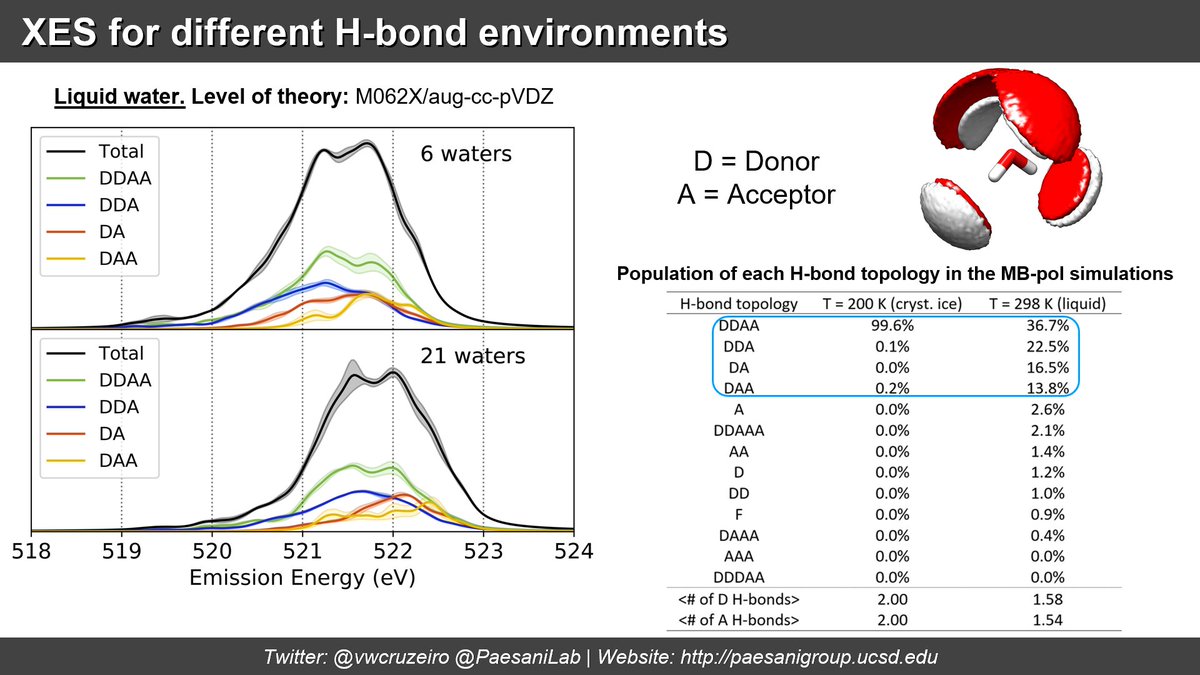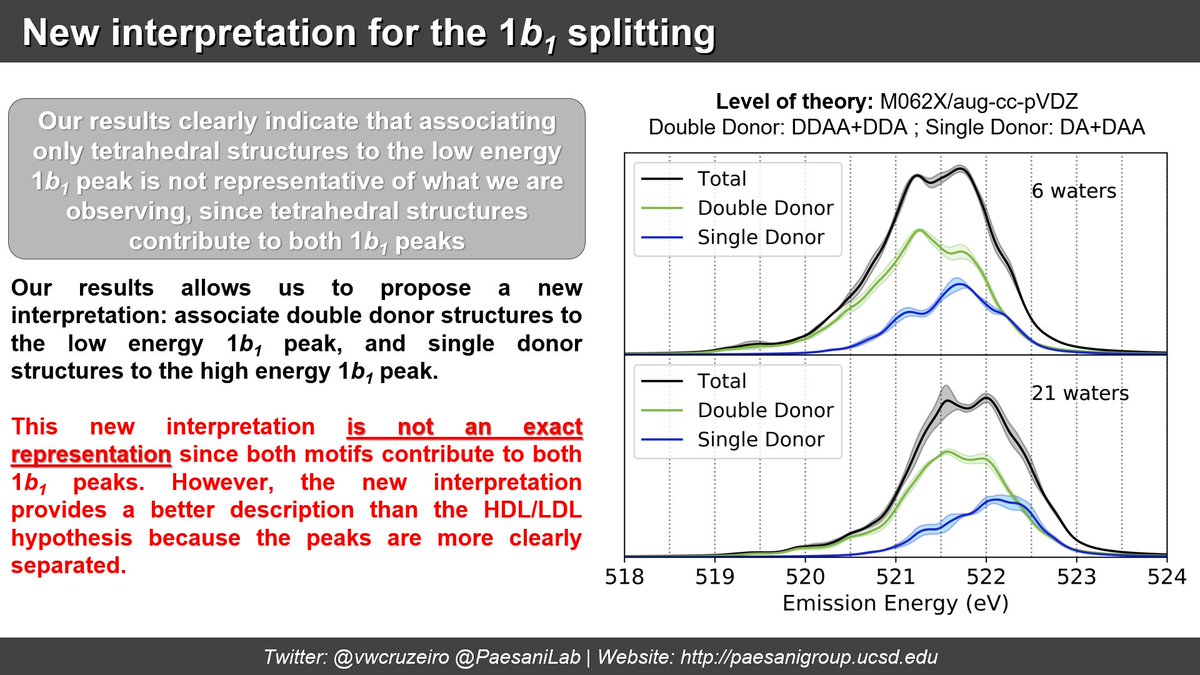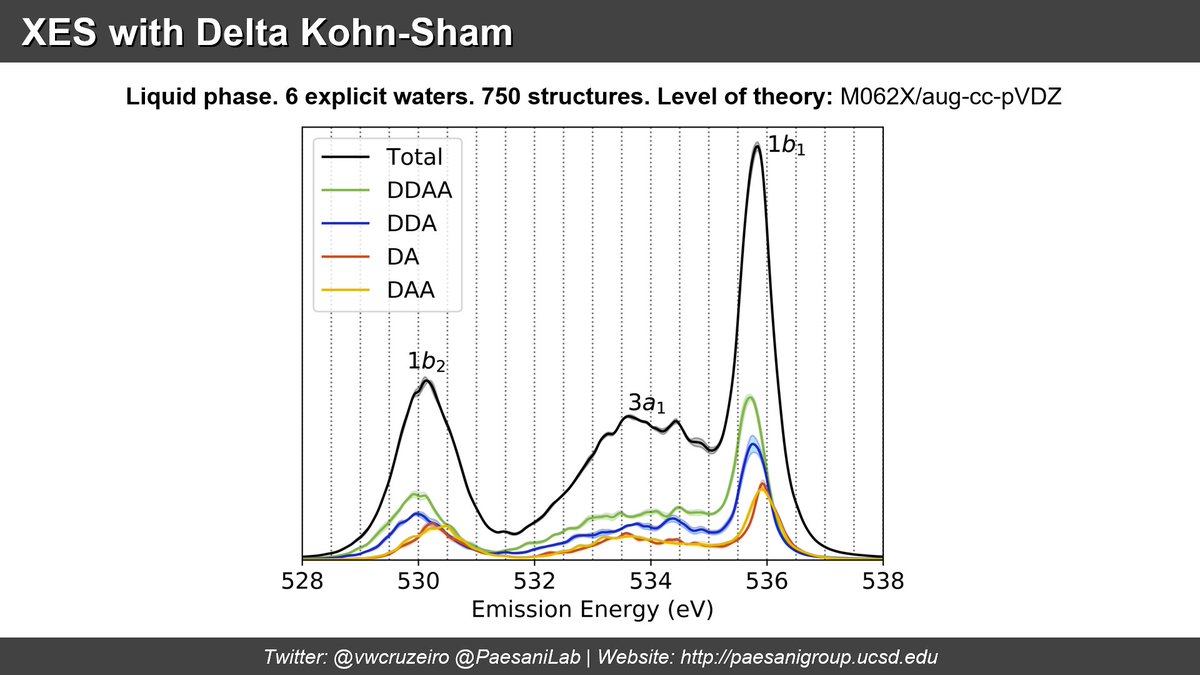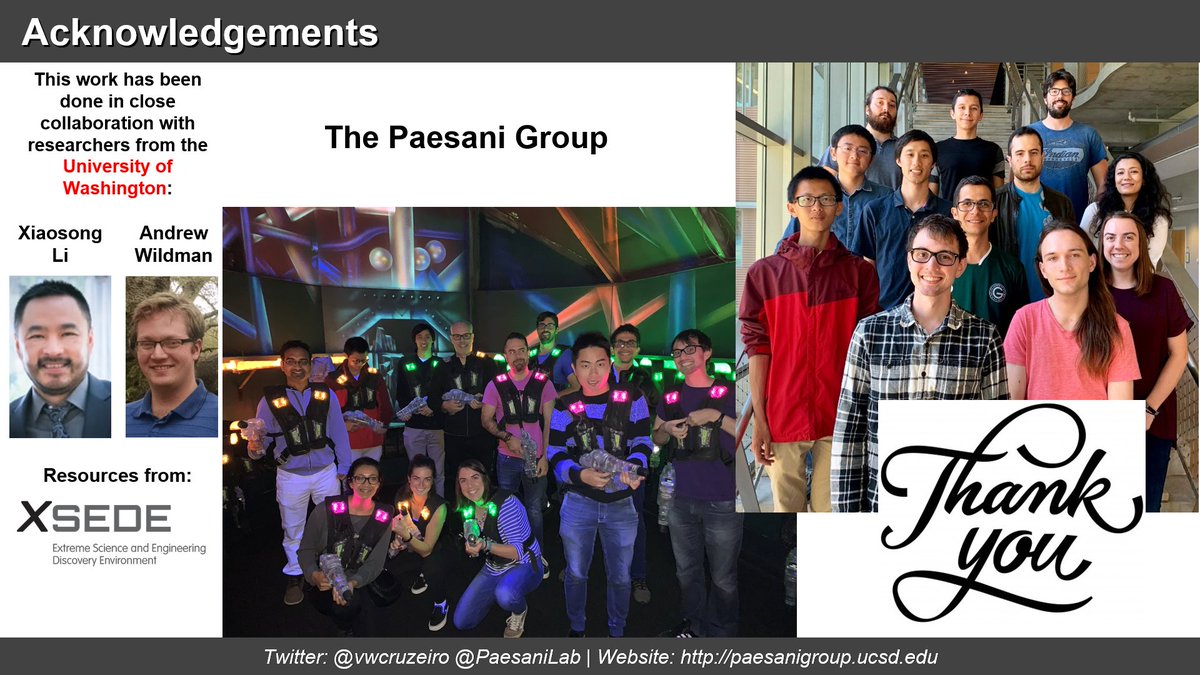Olá @LatinXChem https://abs.twimg.com/emoji/v2/... draggable="false" alt="👋" title="Waving hand" aria-label="Emoji: Waving hand">! I am going to tell you about an exciting work we are doing! A collaboration between the @PaesaniLab and the great Xiaosong Li group at @UW. Let me tell you more about it. Come with me in this thread
https://abs.twimg.com/emoji/v2/... draggable="false" alt="👋" title="Waving hand" aria-label="Emoji: Waving hand">! I am going to tell you about an exciting work we are doing! A collaboration between the @PaesaniLab and the great Xiaosong Li group at @UW. Let me tell you more about it. Come with me in this thread https://abs.twimg.com/emoji/v2/... draggable="false" alt="👇" title="Rückhand Zeigefinger nach unten" aria-label="Emoji: Rückhand Zeigefinger nach unten"> @UCSDChemBioChem #LatinXChem #LatinXChemTheo #Theo163 (1/12)
https://abs.twimg.com/emoji/v2/... draggable="false" alt="👇" title="Rückhand Zeigefinger nach unten" aria-label="Emoji: Rückhand Zeigefinger nach unten"> @UCSDChemBioChem #LatinXChem #LatinXChemTheo #Theo163 (1/12)
Homer Simpsons as a theoretical chemist https://abs.twimg.com/emoji/v2/... draggable="false" alt="😉" title="Zwinkerndes Gesicht" aria-label="Emoji: Zwinkerndes Gesicht">
https://abs.twimg.com/emoji/v2/... draggable="false" alt="😉" title="Zwinkerndes Gesicht" aria-label="Emoji: Zwinkerndes Gesicht">
Many studies have attempted to describe the X-ray Emission Spectrum(XES) of liquid water but never reproduced the experimental 1b1 splitting. Big complication:the hole in the core orbital prohibits the use of regular QM calculations(2/12)
Many studies have attempted to describe the X-ray Emission Spectrum(XES) of liquid water but never reproduced the experimental 1b1 splitting. Big complication:the hole in the core orbital prohibits the use of regular QM calculations(2/12)
Instead of directly modeling the XES process, we employ an approach to study the opposite process: an excitation from a core orbital to the 1b1 manifold. This allows only the 1b1 region of the spectrum to be described, however, conventional TD-DFT calculations can be used (3/12)
Just a good description of the excitations is not enough, it is also important to have representative structures. For this, we have used the successful MB-pol model. MB-pol has been used in the description of many experimental properties of water, across multiple phases (4/12)
We are writing a new chapter in the successful story of MB-pol applications: we have been able to correctly reproduce the 1b1 splitting in liquid phase for the first time  https://abs.twimg.com/emoji/v2/... draggable="false" alt="🎊" title="Konfettiball" aria-label="Emoji: Konfettiball">
https://abs.twimg.com/emoji/v2/... draggable="false" alt="🎊" title="Konfettiball" aria-label="Emoji: Konfettiball"> https://abs.twimg.com/emoji/v2/... draggable="false" alt="🎉" title="Partyknaller" aria-label="Emoji: Partyknaller">
https://abs.twimg.com/emoji/v2/... draggable="false" alt="🎉" title="Partyknaller" aria-label="Emoji: Partyknaller"> https://abs.twimg.com/emoji/v2/... draggable="false" alt="🥳" title="Partying face" aria-label="Emoji: Partying face"> We see that the splitting almost vanishing in crystallized ice, in agreement to the experiment (5/12)
https://abs.twimg.com/emoji/v2/... draggable="false" alt="🥳" title="Partying face" aria-label="Emoji: Partying face"> We see that the splitting almost vanishing in crystallized ice, in agreement to the experiment (5/12)
But this theoretical accomplishment does not come without its challenges. We observed that the XES lineshape depends on the amount of sampling(very inaccurate with less than 200 TD-DFT calculations), on the choice of the DFT functional (some don’t predict the splitting), …(6/12)
…and on the cluster size! The splitting is only more clearly observed for 6 and 21 waters (~ the 1st solvation shell, and the 1st and 2nd solvation shells). We hypothesize that asymmetries caused by considering partial solvation shells could influence the splitting (7/12)
Our results allow us to directly discuss and bring new insights to the various hypotheses for the 1b1 splitting in literature. This is what we see for the high-density/low-density hypothesis: both HDL and LDL structures contribute to both 1b1 peaks. (8/12)
In another hypothesis, the low energy 1b1 peak is associated with the tetrahedral hydrogen bond environment. Our results actually show that tetrahedral structures contribute to both 1b1 peaks. In crystallized ice all structures are tetrahedral, and we do not see a splitting(9/12)
We propose a new interpretation: associate the low energy 1b1 peak to double donor structures and the high energy 1b1 peak to single donor structures. Even though this is not an exact representation, this gives a better description than the HDL/LDL hypothesis (10/12)
We attempted to describe the full XES using the Delta Kohn-Sham approach. The 1b1 splitting was not reproduced in this case, even though we have used the same level of theory, the same amount of sampling, and the same cluster size as with the approach we presented before (11/12)

 Read on Twitter
Read on Twitter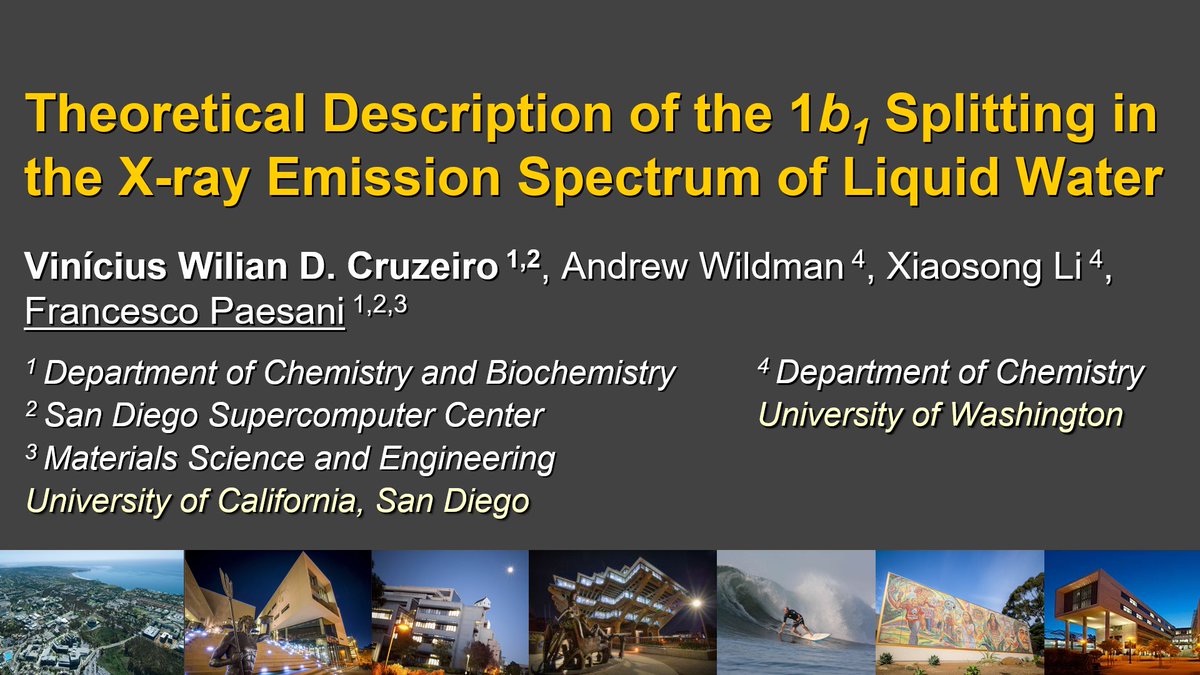 ! I am going to tell you about an exciting work we are doing! A collaboration between the @PaesaniLab and the great Xiaosong Li group at @UW. Let me tell you more about it. Come with me in this threadhttps://abs.twimg.com/emoji/v2/... draggable="false" alt="👇" title="Rückhand Zeigefinger nach unten" aria-label="Emoji: Rückhand Zeigefinger nach unten"> @UCSDChemBioChem #LatinXChem #LatinXChemTheo #Theo163 (1/12)" title="Olá @LatinXChemhttps://abs.twimg.com/emoji/v2/... draggable="false" alt="👋" title="Waving hand" aria-label="Emoji: Waving hand">! I am going to tell you about an exciting work we are doing! A collaboration between the @PaesaniLab and the great Xiaosong Li group at @UW. Let me tell you more about it. Come with me in this threadhttps://abs.twimg.com/emoji/v2/... draggable="false" alt="👇" title="Rückhand Zeigefinger nach unten" aria-label="Emoji: Rückhand Zeigefinger nach unten"> @UCSDChemBioChem #LatinXChem #LatinXChemTheo #Theo163 (1/12)" class="img-responsive" style="max-width:100%;"/>
! I am going to tell you about an exciting work we are doing! A collaboration between the @PaesaniLab and the great Xiaosong Li group at @UW. Let me tell you more about it. Come with me in this threadhttps://abs.twimg.com/emoji/v2/... draggable="false" alt="👇" title="Rückhand Zeigefinger nach unten" aria-label="Emoji: Rückhand Zeigefinger nach unten"> @UCSDChemBioChem #LatinXChem #LatinXChemTheo #Theo163 (1/12)" title="Olá @LatinXChemhttps://abs.twimg.com/emoji/v2/... draggable="false" alt="👋" title="Waving hand" aria-label="Emoji: Waving hand">! I am going to tell you about an exciting work we are doing! A collaboration between the @PaesaniLab and the great Xiaosong Li group at @UW. Let me tell you more about it. Come with me in this threadhttps://abs.twimg.com/emoji/v2/... draggable="false" alt="👇" title="Rückhand Zeigefinger nach unten" aria-label="Emoji: Rückhand Zeigefinger nach unten"> @UCSDChemBioChem #LatinXChem #LatinXChemTheo #Theo163 (1/12)" class="img-responsive" style="max-width:100%;"/>
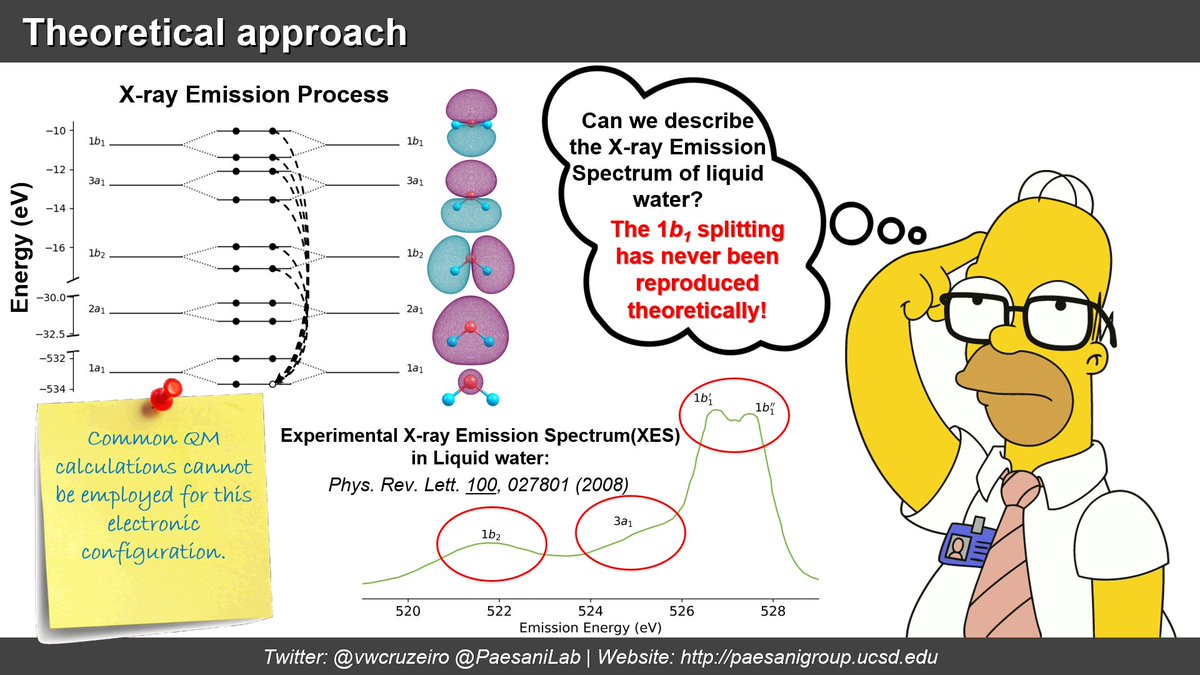 Many studies have attempted to describe the X-ray Emission Spectrum(XES) of liquid water but never reproduced the experimental 1b1 splitting. Big complication:the hole in the core orbital prohibits the use of regular QM calculations(2/12)" title="Homer Simpsons as a theoretical chemisthttps://abs.twimg.com/emoji/v2/... draggable="false" alt="😉" title="Zwinkerndes Gesicht" aria-label="Emoji: Zwinkerndes Gesicht">Many studies have attempted to describe the X-ray Emission Spectrum(XES) of liquid water but never reproduced the experimental 1b1 splitting. Big complication:the hole in the core orbital prohibits the use of regular QM calculations(2/12)" class="img-responsive" style="max-width:100%;"/>
Many studies have attempted to describe the X-ray Emission Spectrum(XES) of liquid water but never reproduced the experimental 1b1 splitting. Big complication:the hole in the core orbital prohibits the use of regular QM calculations(2/12)" title="Homer Simpsons as a theoretical chemisthttps://abs.twimg.com/emoji/v2/... draggable="false" alt="😉" title="Zwinkerndes Gesicht" aria-label="Emoji: Zwinkerndes Gesicht">Many studies have attempted to describe the X-ray Emission Spectrum(XES) of liquid water but never reproduced the experimental 1b1 splitting. Big complication:the hole in the core orbital prohibits the use of regular QM calculations(2/12)" class="img-responsive" style="max-width:100%;"/>
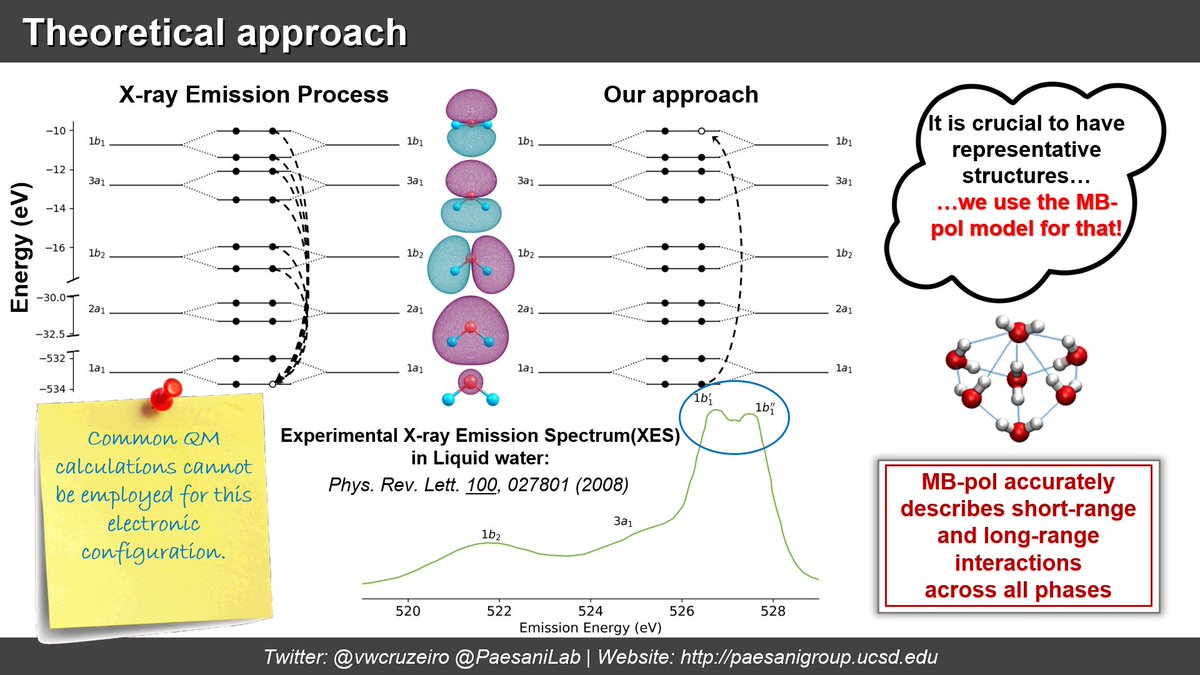
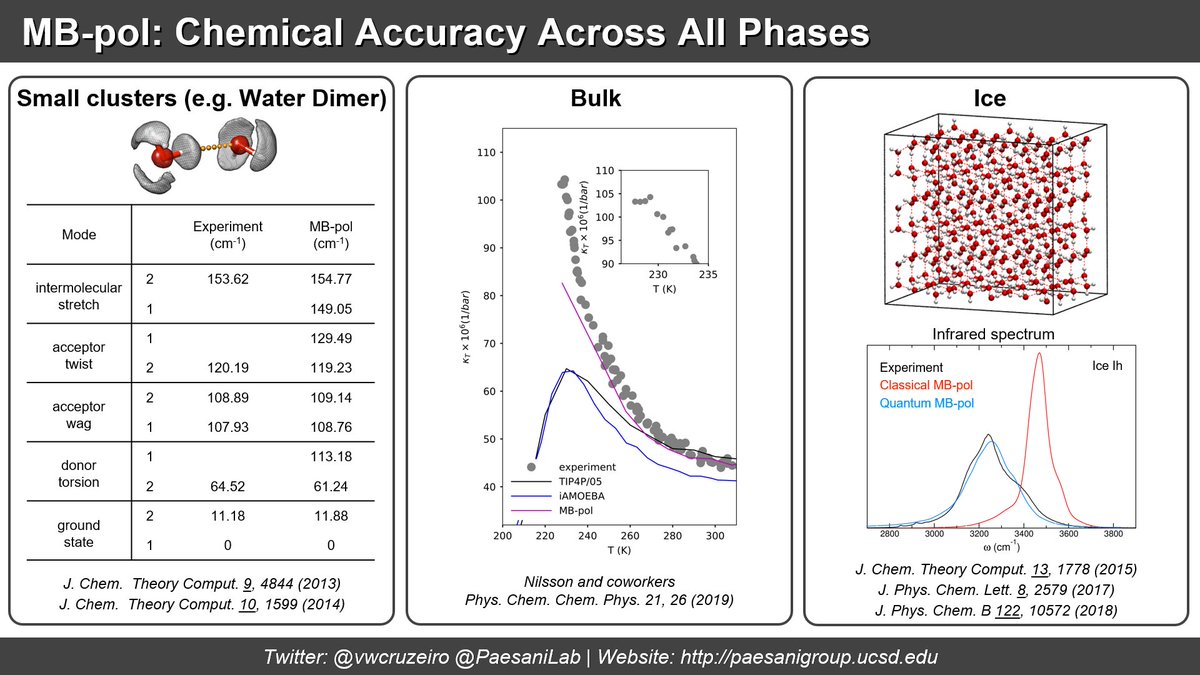
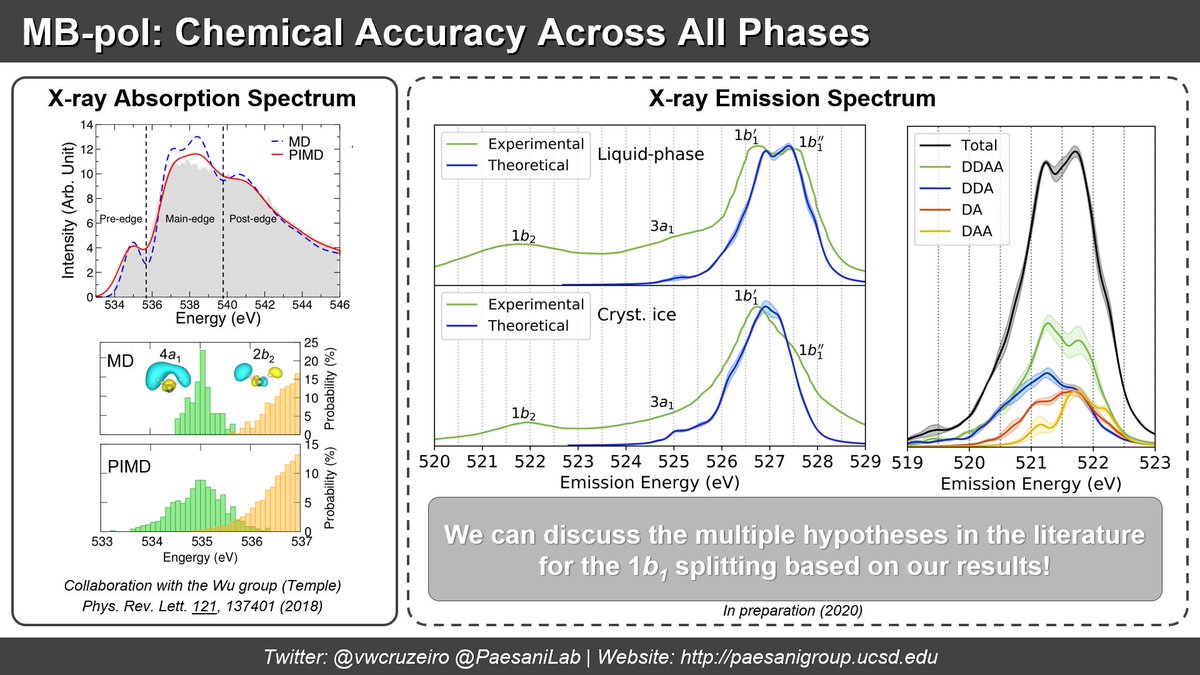 https://abs.twimg.com/emoji/v2/... draggable="false" alt="🎉" title="Partyknaller" aria-label="Emoji: Partyknaller">https://abs.twimg.com/emoji/v2/... draggable="false" alt="🥳" title="Partying face" aria-label="Emoji: Partying face"> We see that the splitting almost vanishing in crystallized ice, in agreement to the experiment (5/12)" title="We are writing a new chapter in the successful story of MB-pol applications: we have been able to correctly reproduce the 1b1 splitting in liquid phase for the first time https://abs.twimg.com/emoji/v2/... draggable="false" alt="🎊" title="Konfettiball" aria-label="Emoji: Konfettiball">https://abs.twimg.com/emoji/v2/... draggable="false" alt="🎉" title="Partyknaller" aria-label="Emoji: Partyknaller">https://abs.twimg.com/emoji/v2/... draggable="false" alt="🥳" title="Partying face" aria-label="Emoji: Partying face"> We see that the splitting almost vanishing in crystallized ice, in agreement to the experiment (5/12)" class="img-responsive" style="max-width:100%;"/>
https://abs.twimg.com/emoji/v2/... draggable="false" alt="🎉" title="Partyknaller" aria-label="Emoji: Partyknaller">https://abs.twimg.com/emoji/v2/... draggable="false" alt="🥳" title="Partying face" aria-label="Emoji: Partying face"> We see that the splitting almost vanishing in crystallized ice, in agreement to the experiment (5/12)" title="We are writing a new chapter in the successful story of MB-pol applications: we have been able to correctly reproduce the 1b1 splitting in liquid phase for the first time https://abs.twimg.com/emoji/v2/... draggable="false" alt="🎊" title="Konfettiball" aria-label="Emoji: Konfettiball">https://abs.twimg.com/emoji/v2/... draggable="false" alt="🎉" title="Partyknaller" aria-label="Emoji: Partyknaller">https://abs.twimg.com/emoji/v2/... draggable="false" alt="🥳" title="Partying face" aria-label="Emoji: Partying face"> We see that the splitting almost vanishing in crystallized ice, in agreement to the experiment (5/12)" class="img-responsive" style="max-width:100%;"/>
